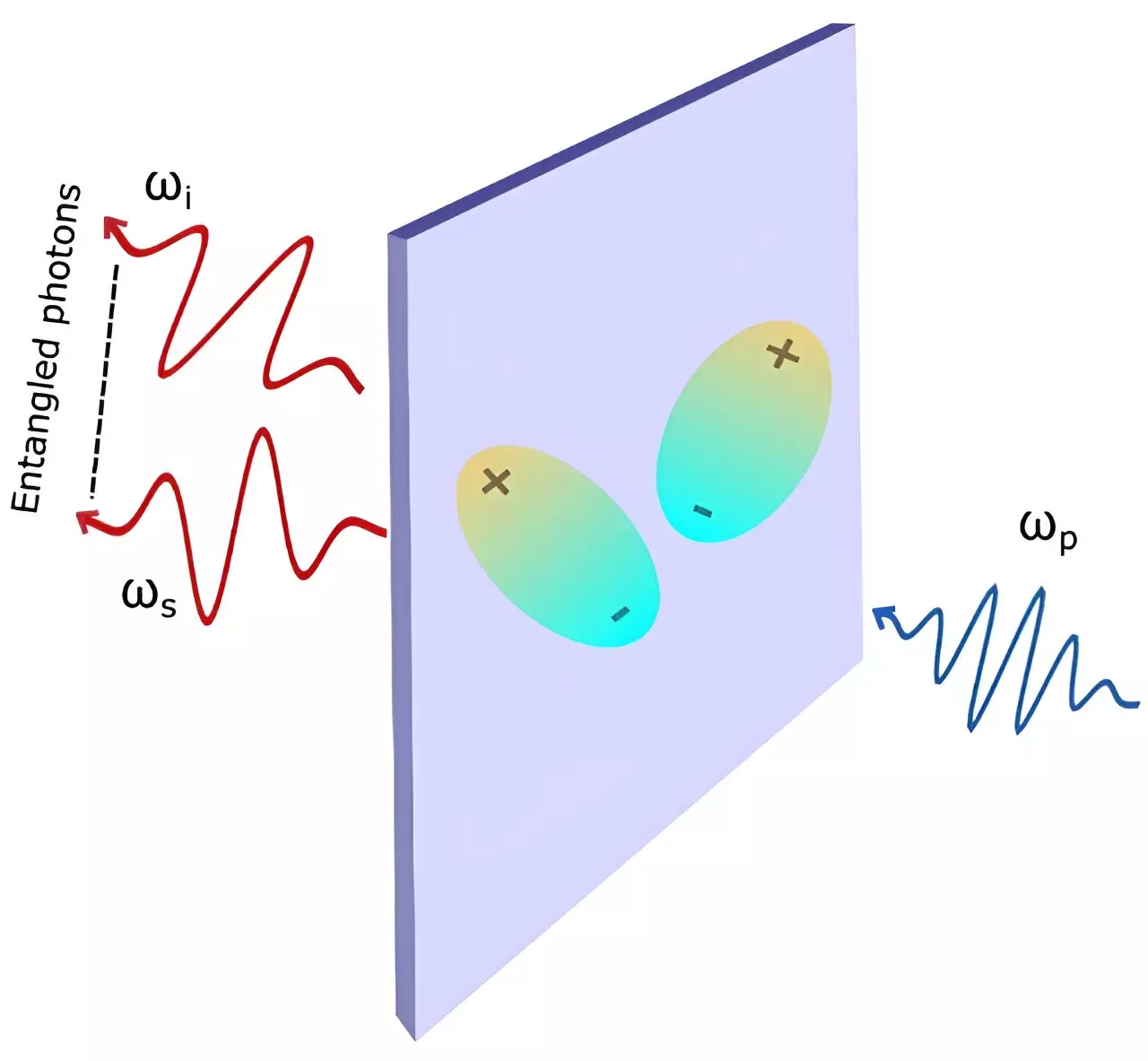In the realm of quantum technology, quantum entanglement represents an extraordinary phenomenon where two or more particles become interconnected, allowing for instantaneous correlations in their properties, irrespective of the distance separating them. This naturally occurring linkage underpins various advancements in quantum computing, secure communications, and enhanced measurement techniques. The generation of entangled photons, the fundamental particles of light required for these applications, has been a subject of extensive research due to their inherent benefits in facilitating entanglement. Traditionally, one of the primary methods for producing entangled photon pairs involves a rather inefficient process known as spontaneous parametric down-conversion (SPDC). Recent findings, however, present a promising alternative by leveraging excitonic interactions within non-linear optical materials.
A groundbreaking study conducted by a research team at the National University of Singapore (NUS) unveils the powerful effects of excitonic resonances on the efficiency of entangled photon generation. Led by Associate Professor Su Ying Quek, the research delves into the interaction between excitons—pairs of negative and positive charges generated when light interacts with certain non-linear optical crystals. Notably, the study postulates that the efficiency of SPDC can be significantly augmented through these many-body interactions. Here, ‘exciton’ refers to the bound states of electrons and holes that are the result of the fundamental excitations within the crystal structure.
Historically, the efficiency of SPDC had posed a challenge to researchers, largely due to the limitations of existing materials. However, the team’s findings suggest that by manipulating the arrangement and proximity of excitons within specific crystalline environments, the transition probabilities for SPDC can experience marked enhancements.
Diving deeper into the mechanics of their research, the team conducted comprehensive quantum mechanical calculations that facilitated an exploration of the non-linear optical responses of crystal materials under various light frequencies. Dr. Fengyuan Xuan, the study’s lead author, articulated that the probability of photon generation through SPDC can be dramatically heightened when opposing charges derived from excitons are situated closer together, enhancing the overall efficacy of entangled photon pair production.
This theoretical framework builds upon decades of foundational research into light-matter interactions, bringing forth the realization that the spatial configuration of excitons within ultrathin crystals can substantially influence the outcomes of SPDC processes. In traditional approaches, such interactions were often overlooked, leading to significant underestimations of the potential advantages offered by ultrathin material forms.
Traditionally, the use of ultrathin optical crystals has been impeded by concerns surrounding phase matching, a technical complication that often undermines efficiency in photon generation. Contrary to previous assumptions that ultrathin structures would inherently decrease photon production rates due to reduced material volume, the current research suggests that enhanced excitonic interactions may indeed nullify these drawbacks. This breakthrough opens a pathway for the implementation of ultrathin crystals, positioning them as viable and potentially superior sources for entangled photons.
Additionally, the study explored the layered non-linear optical material, NbOI2, to further investigate its applicability in generating entangled photons. The researchers conducted simulations and found a remarkable consistency between their theoretical predictions and empirical results from prior experiments. This alignment underscores the validity of their approach and suggests an exciting avenue for future investigations.
The revelations posited by the NUS team illuminate a future where generating entangled photons becomes more efficient and more practical, particularly through integration into hybrid quantum-photonic systems. Such advancements could propel the development of next-generation quantum devices that are crucial to revolutionizing communications and information processing within quantum networks.
The exploration and understanding of excitonic effects within non-linear optical crystals stand to redefine entangled photon production, significantly impacting the landscape of quantum technology. The promising results from the NUS study mark a noteworthy step toward more efficient and accessible quantum light sources, paving the way for innovative applications that could transform our approach to quantum computing and secure communications in the near future.

